Search results
Native American Genealogy
November 30, 2012 by ramona
Filed under Genealogy Research Resources, Latest News, Sharing Genealogy Information
 Native American genealogy can present some unique research problems, distinct from family trees that are deeply rooted in Europe and Great Britain.
Native American genealogy can present some unique research problems, distinct from family trees that are deeply rooted in Europe and Great Britain.
Native American genealogy is simply not a straightforward matter of pouring through the usual church and census records.
Researchers on the trail of their Native American ancestors need to develop an understanding of tribal:
- Traditions
- Culture
- Naming customs
- Kinship systems
- History
All of which vary greatly between the different nations.
The good news for genealogy beginners’ starting out with Native American genealogy is that there is no shortage of resources for learning the basics of the nation you are researching. Two wonderful sources to start the ball rolling are the National Archives: Native American Heritage and Family Search: American Indian Genealogy
Once you have done your homework, here is another excellent resource you will find enriching.
Native American Genealogy: A recorded history
Edward Curtis
In the early 1900s, photographer Edward Curtis began to fulfill a major life goal: to record as much of the traditional life of Native American peoples as possible, before it disappeared.
Endorsed by President Theodore Roosevelt and funded by financier J.P. Morgan, Edward Curtis devoted the next thirty years of his life to the project. Travelling across the United States and Canada as far as the Northwest Territories Curtis documented over 80 tribes, for which he earned the nickname “Shadow Catcher”.
What makes Curtis’ body of work so remarkable is his insight that the present is a result of the past, and therefore must play a significant role in the portrayal of a people. To this end Curtis was not satisfied with posed pictures taken on reservations but instead set out to capture life lived or as it was lived in more natural settings.
Due to his efforts, now an invaluable collection of media includes recorded:
- Language
- Music
- Tribal mythologies and history
- Described tribal population
- Traditional foods
- Dwellings
- Clothing
- Games
- Ceremonies
- Burial customs
In addition to this, Curtis managed to capture the images of many notable Indian people of the time, including Red Cloud, Geronimo, Medicine Crow and Chief Joseph.
http://youtu.be/oVPLF9tXWlg
In due course Curtis shot over 40,000 photographs, conserved 10,000 audio recordings and made what is considered the world’s first documentary film.
Hispanic Heritage Month
September 13, 2012 by ramona
Filed under Articles, Latest News
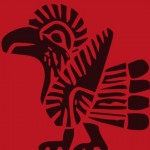 September 15 marks the start of Hispanic Heritage Month. A month long celebration of Hispanic culture that recognizes the role Hispanic Americans played in the forming of North America.
September 15 marks the start of Hispanic Heritage Month. A month long celebration of Hispanic culture that recognizes the role Hispanic Americans played in the forming of North America.
From Columbus’s discovery of the “New World” under the patronage of Spanish monarchs to the earliest continuous North American settlement in St. Augustine, Florida. Hispanic people have played an important part in the shaping of a nation.
Hispanic Heritage Month began, as a week long celebration first made official by President Lyndon Johnson in 1968. In 1988, President Ronald Reagan expanded it to a month long salute beginning on 15 September and running through to 15 October.
Today, an estimated 14% of US citizens claim Hispanic roots. That adds up to approximately 42.7 million Americans with a heritage that can be traced back to Mexico, Spain, the Caribbean and both Central and South America.
For genealogy beginners with an interest in learning more about their Spanish American ancestry here are a few great places for you to begin climbing the branches of your family tree.
Spanish American Genealogical Association (SAGA)
Founded in April 1987, SAGA is a non-profit organization interested in collecting, researching, indexing and digitizing genealogical resources related to the earliest Spanish and Mexican settlers in Texas.
Hispanic Genealogy Facebook Page
A fantastic page where you can go to ask questions related to Hispanic genealogy.
FamilySearch.org
Family Search has a total of 174 collections related to Hispanic Genealogy including Catholic Church records, Census, Civil Registrations and Immigration, in addition to some very early birth, baptism, marriage and death records.
Celebrations
If you want to get in on some of the Hispanic Heritage events this month, visit the Library of Congress site where you can start your celebrations with Family Day: Central American Traditions at the American History Museum, Smithsonian Institution: which promises to be a day filled with music, dance and art.
While you are there spend a little time learning about the culture-hero and deity, Quetzalcoatl, Hispanic American war veterans and Hispanic genealogy. All part of this month’s special exhibits and collections.
Volunteers Needed at FamilySearch
August 31, 2012 by ramona
Filed under Articles, Family Search The LDS, Latest News
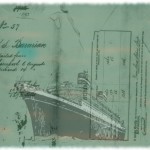 FamilySearch is in the news again with a new project that promises to be one of the most exciting yet for genealogy beginners.
FamilySearch is in the news again with a new project that promises to be one of the most exciting yet for genealogy beginners.
The new project focus is to index U.S. Immigration and Naturalization records as well as passenger lists, border crossing records and passports. The ultimate objective to indexing these records is to make them freely available for family tree enthusiasts looking for their immigrant ancestors.
The variety of information family history hunters can hope to discover from these records includes:
- Ancestor’s Names
- Names of Family or Friends they traveled with
- Place of birth
- Date of immigration
- Date and location of naturalization
- Port of origin
- Port of entry
- Name of ship
To reach this goal FamilySearch is once again inviting the genealogy community to join in and help with the indexing. You do not have to be a professional genealogist, in fact, all you need to do if you would like to become a volunteer on this project is register, sign in and download the indexing software.
To find out more details visit https://www.familysearch.org/us-immigration-naturalization/?icid=fsHomeUSImmNatTxt
Family Search adds even more New Records for 2012
August 26, 2012 by ramona
Filed under Articles, Latest News
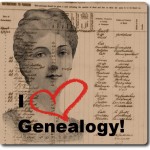 With the 1940s, Census indexing project finished you might think the team at FamilySearch.org would want to take a little rest. They certainly deserve one!
With the 1940s, Census indexing project finished you might think the team at FamilySearch.org would want to take a little rest. They certainly deserve one!
Instead, they are still busy adding new records and updates.
For the month of August 2012, they have added 50 sets of new records and updates covering North America, South America, Great Britain, Europe and more.
Among the new additions are court papers, cemetery transcriptions, obituaries, immigration information, probate records, passenger lists, mortality schedules, civil war records, census and civil registrations as well as marriage, birth, baptism and death records.
Here is a list of new records thus far this month:
New Additions and Updates at Family Search: August 2012 |
Images Included |
Date Added |
| Alabama, Jefferson County Circuit Court Papers, 1870-1916 |
YES |
14 Aug 2012 |
| Alabama, Sumter County Circuit Court Files, 1840-1950 |
YES |
20 Aug 2012 |
| California, San Mateo County Records, 1855-1991 |
YES |
14 Aug 2012 |
| Idaho, Obituaries, 2007 |
YES |
14 Aug 2012 |
| Illinois, Cemetery Transcriptions, 1853-2009 |
YES |
14 Aug 2012 |
| Illinois, County Naturalization Records, 1800-1962 |
YES |
7 Aug 2012 |
| Indiana, Marriages, 1811-1959 |
NO |
16 Aug 2012 |
| Kentucky, Probate Records, 1792-1977 |
NO |
17 Aug 2012 |
| Maine, County Naturalization Records, 1800-1990 |
YES |
10 Aug 2012 |
| Maryland, Probate Estate and Guardianship Files, 1796-1940 |
NO |
15 Aug 2012 |
| Montana, Yellowstone County Records, 1881-2011 | 16 Aug 2012 | |
| New Hampshire, County Naturalization Records, 1771-2001 |
YES |
15 Aug 2012 |
| New Jersey, Probate Records, 1678-1980 |
YES |
15 Aug 2012 |
| New York, New York Passenger and Crew Lists, 1925-1942 |
YES |
22 Aug 2012 |
| Ohio, Births and Christenings, 1821-1962 |
NO |
24 Aug 2012 |
| Ohio, County Births, 1856-1909 |
NO |
24 Aug 2012 |
| Ohio, County Marriages, 1789-1994 |
NO |
16 Aug 2012 |
| Ohio, Jefferson County Court Records, 1797-1940 |
YES |
23 Aug 2012 |
| North Carolina, Estate Files, 1663-1979 |
NO |
2 Aug 2012 |
| Texas, Deaths (New Index, New Images), 1890-1976 |
NO |
11 Aug 2012 |
| Texas, Deaths, 1977-1986 |
NO |
21 Aug 2012 |
| United States Census (Mortality Schedule), 1850 |
NO |
23 Aug 2012 |
| United States Census, 1850 |
NO |
23 Aug 2012 |
| United States Census, 1940 |
NO |
18 Aug 2012 |
| United States Social Security Death Index |
NO |
17 Aug 2012 |
| United States, Civil War Widows and Other Dependents Pension Files |
NO |
15 Aug 2012 |
| United States, World War One Draft Registration Cards, 1917-1918 |
NO |
8 Aug 2012 |
| Quebec Notarial Records, 1800-1900 |
YES |
22 Aug 2012 |
South America |
||
| Chile, Santiago, Cementerio General, 1821-2011 |
YES |
15 Aug 2012 |
| Mexico, Baptisms, 1560-1950 |
NO |
24 Aug 2012 |
| Mexico, Marriages, 1570-1950 |
NO |
24 Aug 2012 |
| Peru, Amazonas, Civil Registration, 1939-1995 |
YES |
20 Aug 2012 |
| Peru, La Libertad, Civil Registration, 1903-1998 |
YES |
15 Aug 2012 |
| Peru, Lima, Civil Registration, 1874-1996 |
NO |
21 Aug 2012 |
| Philippines, Civil Registration (Archives Division), 1902-1945 |
YES |
14 Aug 2012 |
| Portugal, Braga, Catholic Church Records, 1530-1911 |
YES |
21 Aug 2012 |
| Portugal, Castelo Branco, Catholic Church Records, 1714-1911 |
YES |
15 Aug 2012 |
| Portugal, Viseu, Catholic Church Records, 1523-1989 |
YES |
21 Aug 2012 |
Eastern Europe |
||
| Czech Republic, Land Records, 1450-1889 |
YES |
15 Aug 2012 |
| Hungary, Civil Registration, 1895-1980 |
YES |
9 Aug 2012 |
| Poland, Roman Catholic Church Books, 1600-1950 |
NO |
24 Aug 2012 |
Western Europe |
||
| Italy, Torino, Civil Registration (State Archive), 1802-1813 |
YES |
6 Aug 2012 |
| Italy, Vicenza, Casoni, Parocchia di San Rocco, Catholic Church Records, 1597-1941 |
YES |
17 Aug 2012 |
| Spain, Consular Records of Emigrants, 1808-1960 |
YES |
6 Aug 2012 |
| Spain, Cádiz, Civil Registration Records, 1870-1960 |
YES |
20 Aug 2012 |
| Spain, Province of Barcelona, Municipal Records, 1583-1902 |
YES |
22 Aug 2012 |
| Sweden, Södermanland Church Records, 1604-1900; index 1640-1860 |
NO |
2 Aug 2012 |
Great Britain |
||
| England, Northumberland, Miscellaneous Records,1570-2005 |
YES |
15 Aug 2012 |
| Great Britain, Births and Baptisms, 1571-1977 |
NO |
21 Aug 2012 |
Australia & New Zealand |
||
| New Zealand, Probate Records, 1878-1960 |
YES |
14 Aug 2012 |
Before you dive into all of these new family history records make sure you are prepared to record all of the new information. On your free Research Tracking Forms and Family Tree Charts: available with your 30-Day FREE TRIAL MEMBERSHIP to Genealogy Beginner.
Finding Your Ancestors in Trades Union Records
August 23, 2012 by ramona
Filed under Articles, Genealogy Occupational Records, Genealogy Records 101, Latest News
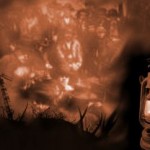 One of the very first things you learn as a genealogy beginner is to look in birth, marriage, death and census records for clues to uncovering your ancestral past. Then you learn about land records, sasines and other records associated with genealogy.
One of the very first things you learn as a genealogy beginner is to look in birth, marriage, death and census records for clues to uncovering your ancestral past. Then you learn about land records, sasines and other records associated with genealogy.
One often overlooked source of information for your family tree are trades union records.
The trade your ancestor worked in may hold valuable information. For example, the record of a tradesman can help you find an ancestor who has disappeared from the record or help you fill in the blanks of, where, when and why they changed locations between census. Quite often trades ran in families and you may even find generations of records if you are lucky.
For family history hunters with ancestors from the UK one record source you may want to track down is The Modern Records Centre. This unique resource is not genealogy specific nevertheless; they do have a number of collections that are genealogy gold.
The Modern Records Centre collection includes information on UK trade union employers that work as guide to help find specific records for individuals.
Some of the trades they cover include:
Blacksmiths, Forge & Smithy Workers
The Scottish United Operative Blacksmiths’ Protective and Friendly Society was recognized on 24 August 1857: records held in this collection are general registration books, 1857-1924. These records hold information on individuals however to find an individual you will need either their membership number or the year they joined the union. Another great resource in this collection is the monthly, quarterly and annual/financial reports (1858-1961). This set of records includes lists of deceased members and their spouses.
Joiners
The Amalgamated Society of Carpenters and Joiners/Amalgamated Society of Woodworkers hold membership records in three series. To find information on individual members you will need to know the branch to which your ancestor belonged.
· What the collection contains and what you can hope to find:
· Admission books (1895-1931): Your ancestors name, age when admitted, number of years in the trade, the date he was admitted, his marital status, if he recieved funeral benefits, excluded members and if he was transferred between branches.
· Registration books (1901-1921): Some of the information included are name, age when admitted, date admitted, marital status, date of marriage and name of branch, any benefits received and date of death or exclusion from the union.
· Reference books (1901-1921): The reference books contain lists of members in 1901, 1911 and 1921 that had transferred in another place.
· Annual reports (1920-1971): The most interesting thing about the Annual reports is that they contain obituaries of several members.
Railwaymen
There are several unions for railwaymen with records dating from so it will be very helpful to know exactly which union your ancestor was a member of. In spite of this, the collection has some of the richest genealogical holdings.
Annual reports of the Orphans Fund (1889, 1893-1912):
These records hold the details of payments made to the children of deceased members. To research the collection you will need to know the year(s) benefit were granted.
Record of accidents, inquests, Board of Trade enquiries, and legal cases (1901-1907):
This collection is indexed by branch and arranged in chronological order. It contains information on accidents and inquests and can tell you the date ,place and nature of an accident along with whether or not any compensation was paid or the outcome of an inquest. Researchers will need to know an approximate date of accident as well as the member’s branch.
The Modern Records Centre also holds union records for Boilermakers, Bookbinders, Bricklayers, Gilders, Ironfounders, Papermakers, Printing Workers, Quarrymen, Seamen, Shipwrights & Shipbuilders, Stonemasons and Telegraphists among many others.
Before you head off to research your ancestors trades take advantage of genealogybeginner.com’s 30-day free trial membership and download your Family Tree Charts and Research Tracking Forms today.
Is There Gold in your Family Tree?
August 14, 2012 by ramona
Filed under Articles, Genealogy Research Resources, Latest News, Sharing Genealogy Information
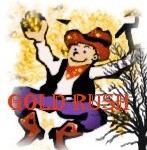 One of the most enjoyable things about climbing your family tree is discovering ancestors who were involved in one of histories great events.
One of the most enjoyable things about climbing your family tree is discovering ancestors who were involved in one of histories great events.
August 16th marks the anniversary of the Klondike Gold Rush and any genealogy beginner that descends from one of the miners or “Stampeders” who set off to strike it rich in 1897 needs to know about Yukon GenWeb.
The Yukon GenWeb is a compilation of free genealogy resources loaded with links and information to all things related to the “last great gold rush”. Their resources include a listing of related Archives & Libraries, Books and Publications, Yukon Cemeteries, Census Returns, Church Records and Registers.
Some of the highlights of their resources include:
- A collection of Directory Records with a link to Ferguson’s 1901 Alaska/Yukon Directory, which lists over 24,200 gold rush participants
- Pioneer Biographies in their Family Records collection
- Relevant First Nations information
- Immigration records including Border Entry, 1908-1918: List of Ports, Dates and Microfilm Reel Numbers
- Passenger Lists, 1865-1922
- Land Titles Records
- Military Records
Before you head off to search for your Gold Rush ancestors make sure you sign up for a 30-day free trial membership to Genealogy Beginner and download your complimentary family tree charts and research tracking forms.
You are going to need them when you start exploring the Pan for Gold Database, North West Mounted Police (NWMP) – Personnel Records, 1873-1904, Manager & Proprietors of Historic Yukon & Alaska Roadhouses, Hotels and Saloons plus so much more!
Ships Lists: Free Genealogy Resource
August 5, 2012 by ramona
Filed under Articles, Genealogy Research Resources, Latest News, Sharing Genealogy Information
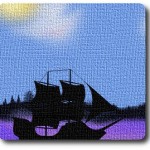 Genealogy beginners looking for immigrant ancestors should head straight over and bookmark The Immigrant Ships Transcribers Guild (ISTG) website.
Genealogy beginners looking for immigrant ancestors should head straight over and bookmark The Immigrant Ships Transcribers Guild (ISTG) website.
The ISTG is a volunteer group that has been working since 1998 to transcribe ships lists on a global scale and publish them on the internet. In the years since its inception, the ISTG website has grown to include volumes of passenger manifests.
The scale of the site may make navigating it a little intimidating to the novice family history hunter. A short tutorial will help make things a little easier.
How to Search the ISTG
Step one:
Locate the search box on the upper left hand corner of the opening page and enter the surname you are researching. This should move you forward to a page with a long list of matches.
Step Two:
On the upper right hand corner of the page, you will find an option for advanced searches…click the option.
The advanced search will give you four text boxes
1. All – will return pages that include all of the terms entered
2. Phrase – will return pages matching the exact phrase
3. Any – will return pages that match any of the terms – in no specific order
4. None – includes other selected items and must be used in tandem with other fields
For example, entering “Alexander McCallum” into the “All” field returns ships named Alexander as well as passengers surnamed Alexander and McCallum.
The same search entered in the “Phrase” field returns only passengers named Alexander McCallum.
In the Any field these search terms return the same results as entering into the “All” field. It is good to use the “None” field in tandem as you can enter terms you do not want matched in order to narrow your search.
Once you are comfortable using the search function you will be free to search some of this sites great free resources from Jacobite rebellion ships to New York arrivals.
One great feature of this site that you will not want to miss is the ISTG compass, which is a tool to simplify your searches by breaking down resources into consumable information bites.
The ISTG is another site that relies heavily on volunteer transcribers, if you would like to help check out their Guild Application for more information.
Make sure you are prepared for your visit to The Immigrant Ships Transcribers Guild with Genealogy Beginners Family Tree Starter Kit, available with your 30-day free membership.
Research Americas Earliest Immigrants FREE
July 30, 2012 by ramona
Filed under Articles, Genealogy Research Resources, Latest News, Sharing Genealogy Information
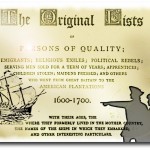 Family Tree fanatics wishing to research the earliest immigrants to the Americas are in for a real treat with this fantastic book published in 1874 and titled The Original Lists.
Family Tree fanatics wishing to research the earliest immigrants to the Americas are in for a real treat with this fantastic book published in 1874 and titled The Original Lists.
The book will be of great interest to any family history seekers whose family came to the Americas during 1600-1700.
Its contents are comprised of the original lists of:
- Persons of quality
- Emigrants
- Religious exiles
- Political rebels
- Serving men sold for a term of years
- Apprentices
- Children stolen
- Maidens pressed; and others who went from Great Britain to the American Plantations, 1600-1700
It is exciting to note that within the pages of this fantastic resource is a list of early immigrant passengers that came over on the Mayflower (1620), The Fortune (1621), The Anne and Little James(1623).
Along with this bounty of genealogical booty, the book lists the ages of individuals, the ships they embarked on and various other interesting details such as the following:
“The bill of mortality of the said rebells that dyed since they were reced on board and were thrown overboard out of the said ship are these uiz. December the Sixteenth Thomas Venner, Seventeenth W* Guppy, Eighteenth John Willis, Nineteenth Edward Venn, the same day Philip Cox one and Twentieth Robert Vawter, Five and Twentieth Wm Greenway, January the first Peter Bird, Witnessed by the commander, March and officers’ of the said ship this Eigth day of January 1685.”
John May
John Penn
John Maddison
Gabriel Whithorn
Malcum Fraser
One very interesting chapter is “Entries relating to America taken from the Indexes to the Patent Rolls, commencing 4 James I 1606 and ending 14 William III 1702.” The entries in this section are very intriguing and include entries such as:
“Grant of Incorporation, by the name of the treasurer and Company of Adventurers and Planters in the city of London and Bristol, For the Colony and Plantation in Newfoundland.”
Taken from manuscripts held in the State Department; Her Majesty’s Public Record Office, England, this incredible resource is filled from cover to cover with fascinating histories of the earliest pioneers to the Americas.
Before you start flipping through the pages, remember to download your Family Tree Charts and Research Tracking forms available with your 30- Day free trial to Genealogy Beginner.
Read The Original Lists at Internet Archives
Pinning your Family Tree
July 14, 2012 by ramona
Filed under Articles, Family History, Latest News, Preserving Your Family Tree
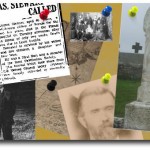 Well it certainly did not take long for family tree fanatics to make use of social media “pinning” sites.
Well it certainly did not take long for family tree fanatics to make use of social media “pinning” sites.
If you are new to social media here is what you need to know about pinning. Pinning is a visual way of sharing your interests via a virtual pin board. You can create boards based on a singular theme such as genealogy, family tree, family history etc. Ultimately, what these sites do is share links through images. One way to think of it is as a visual bookmark.
Pinning for Genealogy
Pintrest
Pintrest can be used as a fantastic tool for organizing your genealogy, sharing resources and following others with like interests. The only catch is that in order to use Pintrest you must first receive an invitation.
Pinspire
If you do not have an invitation to Pintrest, you can try out its identical twin Pinspire. Pinspire is identical to pintrest with one exception…no invitation required.
If you want to check out more pinning sites, Minglewing, Piccsy and Storify are good places to start.
Uencounter.me
The newest kid on the pinning block is Uencounter.me a pinning site with a purpose. Uencounter.me is a mapping site that focuses on letting the user built a visual map of their family tree.
Building a visual map of your ancestors can be a very helpful tool for your family history research. However, the possibilities for information sharing with this type of application are easy to see.
Imagine the map as a resource for finding ancestors by location. Although other search sites come close, if you are not familiar with the geography of the area you are searching… it is easy to become confused and miss something.
For example:
My line of McCallum’s hail from Lanarkshire Scotland can be found in the census at Firth, Carstairs and Carnwath. While that may not mean much on a data screen, having a visual of just how close those communities are, helps give some perspective to your search.
Using Uencounter.me
The process starts by bringing up the map and asking you to zoom into your area of interest. You can also pin a place by adding the address.
Drop down menus let you select:
- Type of Encounter: Genealogy,
- Dates to and from: a date range from the present to the year zero,
- People Here Are / were: ancestors
- This pin relates to: an ancestor
- Specifically: Birth, Marriage, Death, other
For those of you who want to pin live relatives do not worry as the site gives the option for a privacy setting on an individual basis. As you move forward to the next step you will get a pop up box that allows for notes, you can even add photos.
While Uencounter.me shows all the earmarks of a superior genealogy tool, a searchable name function would make this an invaluable free resource for genealogists everywhere.
Need to learn more about finding your ancestors through the geography of genealogy check out Genealogy Beginners lesson on Searching by Place. Available with your 30-day free trial membership.
Genealogy: Online Ethics and Etiquette
July 11, 2012 by ramona
Filed under Articles, Genealogy Standards & Guidelines, Introduction to Genealogy, Latest News
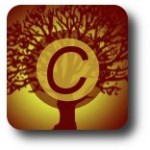 From the novice to the veteran family historian we can all agree that the vast amount of information available online for genealogy research is a great blessing. Therefore, it is more important than ever to become familiar with the ethical practices and etiquette involved in information sharing when it comes to our family trees.
From the novice to the veteran family historian we can all agree that the vast amount of information available online for genealogy research is a great blessing. Therefore, it is more important than ever to become familiar with the ethical practices and etiquette involved in information sharing when it comes to our family trees.
On sites such as Ancestry.com and Find a Grave, a great deal of the information is made available through the contributions of fellow researchers. Thus, it is becoming easier for genealogy beginners to discover documents and photos at the touch of a few keys.
Family Tree Ethics and Etiquette
Published genealogies can be a truly wonderful resource, they aid us in our own research and quite often lead to the discovery of cousins we never knew we had. The down side of this is that through innocent error and sometimes intent, the genealogical community experiences a degree of unethical behavior and bad manners.
It is very exciting to find published information about your ancestors online however, before you snag that birth, marriage, death record or photo of G.G. Grandma:
1. Ask Permission
This is a common scenario on sites like Ancestry.com where photos and records are often public. This is because Ancestry.com is meant to be a collaborative site and although it states in their Community Guidelines that “Any information you post in our community is public and can be copied, modified and distributed by others” you should still ask permission of the original poster.
2. Give Credit
When using published documents or photos always thank the original contributor A little blurb that reads – Photo Courtesy of Ms. Nice Genealogist – is just good manners.
To learn more about this subject check out Genealogy Beginner’s lesson # 1. Genealogy Standards and Guidelines: You Need to Know This First, available with your 30-day free trial membership.
